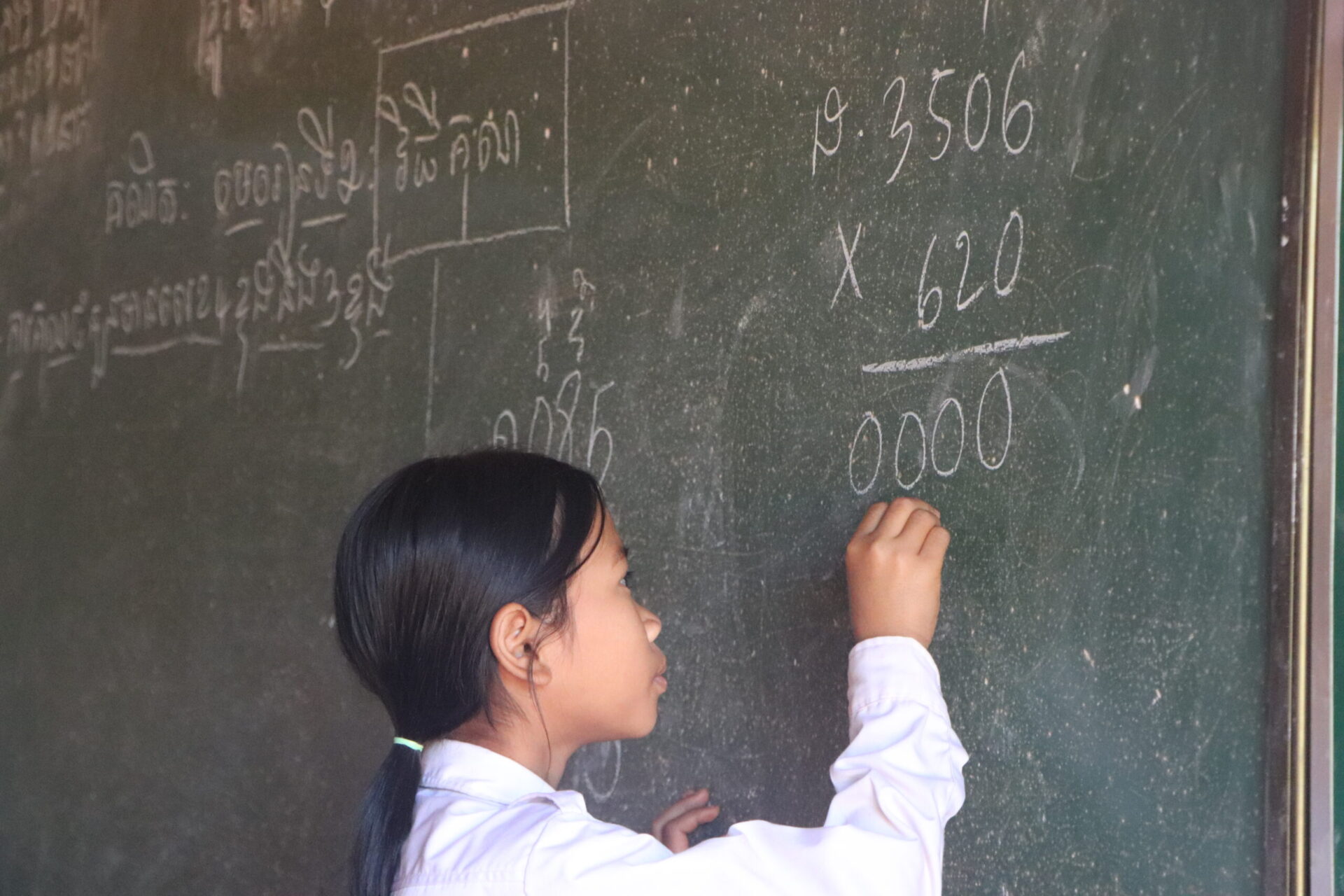On the red soil of Ou Ya Dav District, this four-classrooms primary school is an education hub for over one hundred Jarai students – one of the major Indigenous communities in this Northeast province.
Ratanak Kiri is home to Cambodia’s many Indigenous communities. These Indigenous communities have unique social and cultural norms and practices and speak a variety of languages, which is their home language and the language they use in their communities. Children of these communities grow up speaking their mother tongue and are only exposed to the national language Khmer at school or outside their communities. The Government has decided to implement multilingual education, using both the mother tongue and Khmer language in the curriculum. recognizing the significance of linguistic and cultural diversity within the nation.
Language encompasses their uniqueness, reflects rights to inclusive education and culturally relevance
The piloting of the first Jarai language textbooks in Grade 1 is a significant milestone in the development of Multilingual Education in Cambodia. A green colored Jarai textbook sits open on top of their desks as children at Peak Primary School wander around excitedly. The piloting of the Jarai language of instruction and books started a month earlier. Exciting about this initiative, the school teachers discussed their practices, challenges, and teaching of multilingual education in their school during the exposure visits of government officials who can to learn from these teachers.
“Using multilingual education in the classroom is like a bridge for students. It connects their mother tongue to the Khmer language and makes their learning easier” Sev Hout, the school director said. According to the School Management Committee, consisting of surrounding community members, 90% of the students at Peak Primary School have the Jarai ethnicity. The previous practice at this school was that the teacher provided oral translation of the Khmer textbooks in the Jarai language while teaching. This was a difficult process, and it didn’t do justice to the rich linguistic cultural environment of the learners.
“Using the book contributes to the protection of cultural identity, customs and traditions of the Jarai community because the textbook illustrates the cultural practices relevant to the Jarai community.”, says Keo Phirum, an education officer dedicated to multilingual education at the Provincial Office of Education. Phirum was involved in the training on the methodology and evaluation on the draft of the pilot textbooks. He adds: “Multilingual education encourages better communication between students and teachers, and it is easier for the teachers to teach in the language of the students and the community. It encourages students to come back to school, and even drop out students to come back to school.”




